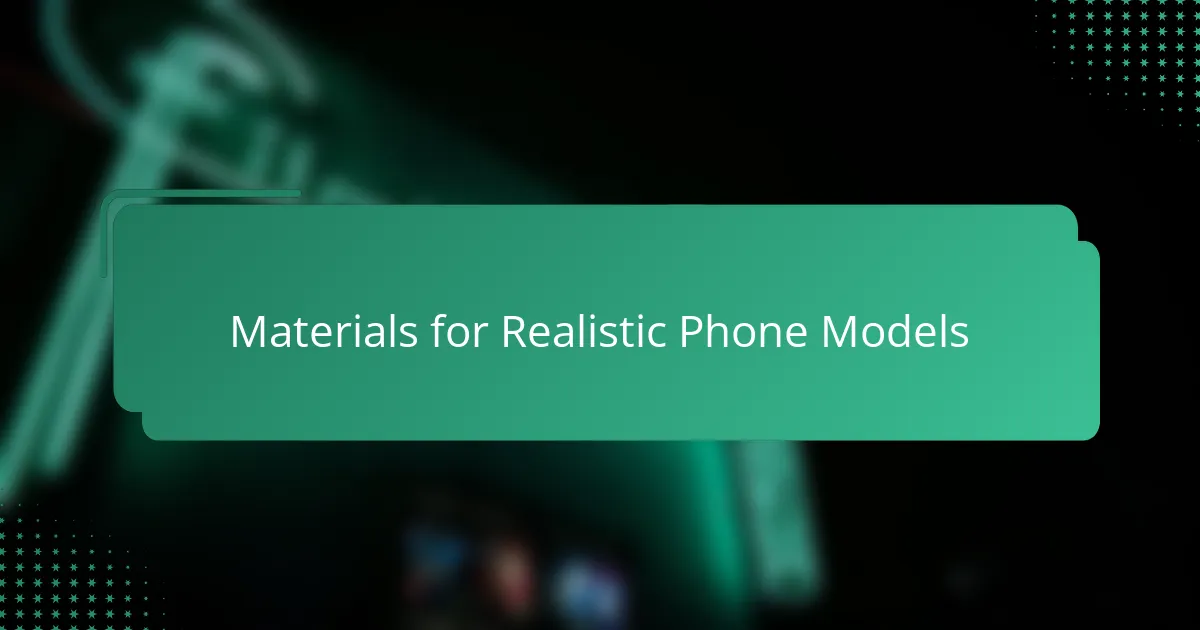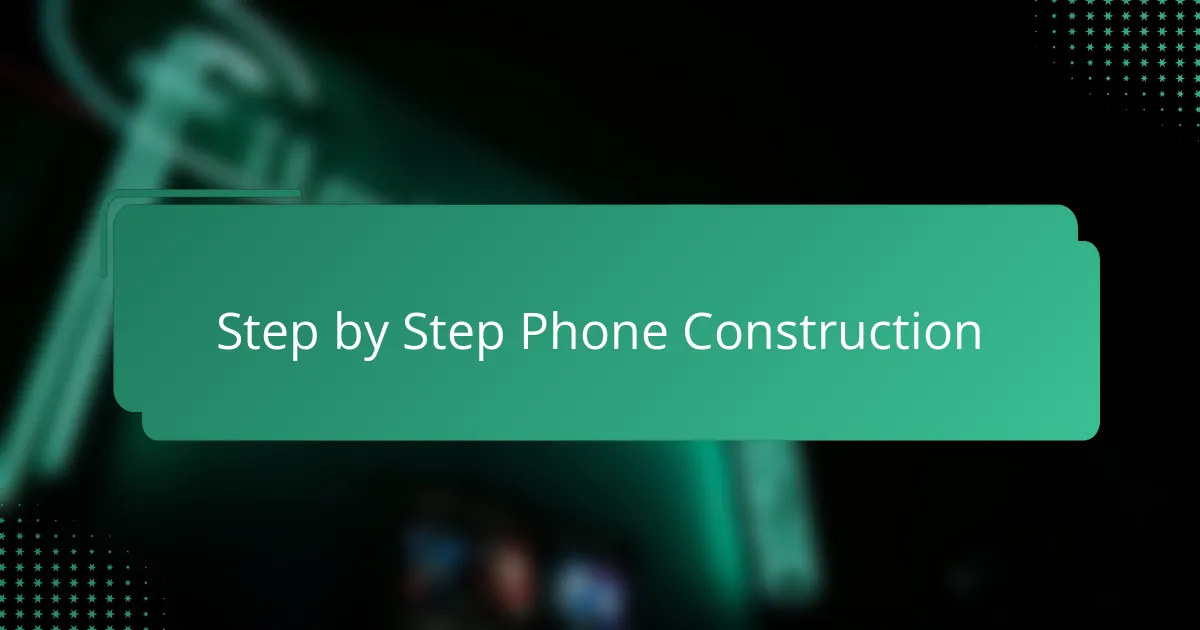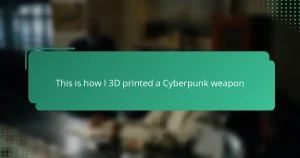Key takeaways
- Science fiction props are essential storytelling tools that enhance audience immersion and emotional connection.
- The right tools and materials, such as plastics and proper finishing techniques, contribute significantly to the realism of props.
- Integrating electronics, like micro-LEDs, adds interactive elements that elevate the prop’s authenticity and evoke a technological vibe.
- Overcoming challenges in aesthetics versus durability and achieving seamless finishes is crucial for creating believable and functional props.

Understanding Science Fiction Props
Science fiction props are more than just objects; they are storytelling tools that bring fictional worlds to life. I’ve always been fascinated by how a simple device, when designed thoughtfully, can evoke a sense of wonder and immerse an audience deeper into the narrative. Have you ever held a prop and felt as if you were touching the future itself?
Creating these props requires a delicate balance between imagination and functionality. From my experience, understanding the science fiction universe’s rules helps shape a prop that feels authentic and believable. It’s not just about looks—it’s about crafting something that sparks curiosity and fuels the story’s mythology.
What makes a science fiction prop truly special is its ability to connect emotionally with viewers. I remember working on designs that initially seemed unusual but, once integrated into the scene, created powerful moments of resonance. Doesn’t that blend of visual intrigue and emotional impact make the creative process all the more fulfilling?

Essential Tools for Prop Engineering
When I first started engineering props, I quickly realized that having the right tools was half the battle. Precision screwdrivers, fine-tipped soldering irons, and a sturdy set of pliers became my trusty companions. These essentials aren’t just practical—they’re the bridges between a wild concept and something tangible you can hold.
One tool that truly changed the game for me was my 3D printer. Suddenly, I could bring detailed designs to life with an accuracy that handcrafting just can’t match. Have you ever been amazed at how a small plastic part can define the whole look and feel of a prop? That’s the magic of combining traditional craftsmanship with modern technology.
Of course, there’s no substitute for good lighting when testing your work. I find that a simple desk lamp with adjustable brightness helps catch flaws early—whether it’s stray glue or uneven paint. Paying attention to these tiny details often means the difference between a prop that looks amateurish and one that truly transports you into its universe.

Materials for Realistic Phone Models
Choosing the right materials for a realistic phone model felt like decoding a secret language. Plastics like ABS and acrylic immediately caught my attention because they strike a perfect balance—lightweight yet sturdy enough to survive countless takes on set. Have you ever noticed how the right kind of plastic can make a prop feel like it belongs in the real world rather than just sitting on a shelf?
I also experimented with metal accents, especially aluminum, to add that sleek, high-tech vibe that screams “future gadget.” Adding tiny screws and textured buttons wasn’t just for show; it gave the phone a tactile realism that invited actors to interact with it naturally. It’s amazing how these small touches can transform a simple shell into something almost believable.
But what truly surprised me was the power of finishing techniques. Applying a matte versus glossy coat changed everything about the phone’s perceived quality. When I layered subtle weathering or fingerprint smudges, suddenly it felt used—part of a lived-in universe rather than a shiny prototype. Doesn’t that subtle imperfection somehow make the prop feel more authentic to you too?

Step by Step Phone Construction
Building the Matrix phone started with breaking down its iconic look into manageable pieces. I began by designing each component separately—screen, buttons, casing—taking countless measurements from screenshots and reference photos. It felt like assembling a puzzle where every tiny element mattered to capture that sleek, mysterious vibe.
Once the parts were planned, I moved on to the actual construction, layering plastics and metals to mimic the phone’s futuristic aesthetic. I remember carefully gluing the acrylic frame to the ABS body, knowing a slight misalignment would ruin the illusion. Have you ever experienced that nail-biting moment where patience is everything, and one slip could send you back to square one?
The final phases were all about refinement—adding those small details like textured buttons and metallic accents gave the phone its believable depth. Spraying on a matte finish and subtle weathering made it feel alive, almost like the phone had its own story to tell. Isn’t it fascinating how these finishing touches turn a prop from lifeless to something you want to pick up and explore?

Integrating Electronics and Effects
Integrating electronics and effects was where the Matrix phone truly came alive for me. I wanted the subtle glow of the screen and the flicker of buttons to evoke that unmistakable cyber vibe, so I carefully embedded micro-LEDs behind the acrylic layers. Have you ever noticed how tiny lights can transform a prop from static to seemingly sentient?
Wiring these delicate components was a test of patience—I spent hours carefully soldering and insulating connections to avoid any shorts that could ruin the effect. Incorporating an on/off switch hidden within the casing was a satisfying detail that made the prop feel functional, not just decorative. It’s small touches like these that convince an actor, and the audience, that this phone is real technology from another world.
Programming simple light patterns also added an extra layer of authenticity. I remember experimenting with flickering sequences that mimicked incoming signals, making the device feel interactive. Isn’t it amazing how a few lines of code can breathe life into a static prop and pull viewers deeper into the story?

Personal Challenges and Solutions
One challenge I faced was balancing aesthetic fidelity with practical durability. Early on, I learned that a prop meant to be handled repeatedly needed reinforcements without sacrificing its sleek appearance. Have you ever held something so fragile that you’re afraid to breathe on it? That was a moment where I had to rethink my approach and reinforce internal structures discreetly.
Another hurdle involved integrating electronics without adding bulk. I remember the frustration of trying to fit tiny LEDs and wiring into the slim phone frame—it felt like fitting a puzzle piece into a shape that just wouldn’t cooperate. Patience and multiple iterations taught me that sometimes the solution lies in miniaturization and creative routing rather than forcing components where they don’t quite fit.
Lastly, achieving seamless finishes was both an art and a science. I recall spending hours testing different paints and coatings, trying to eliminate glare and fingerprints while preserving that futuristic vibe. Isn’t it funny how small imperfections can either ruin a prop or, if handled right, add character and realism? That delicate balance kept me on my toes throughout the project.


